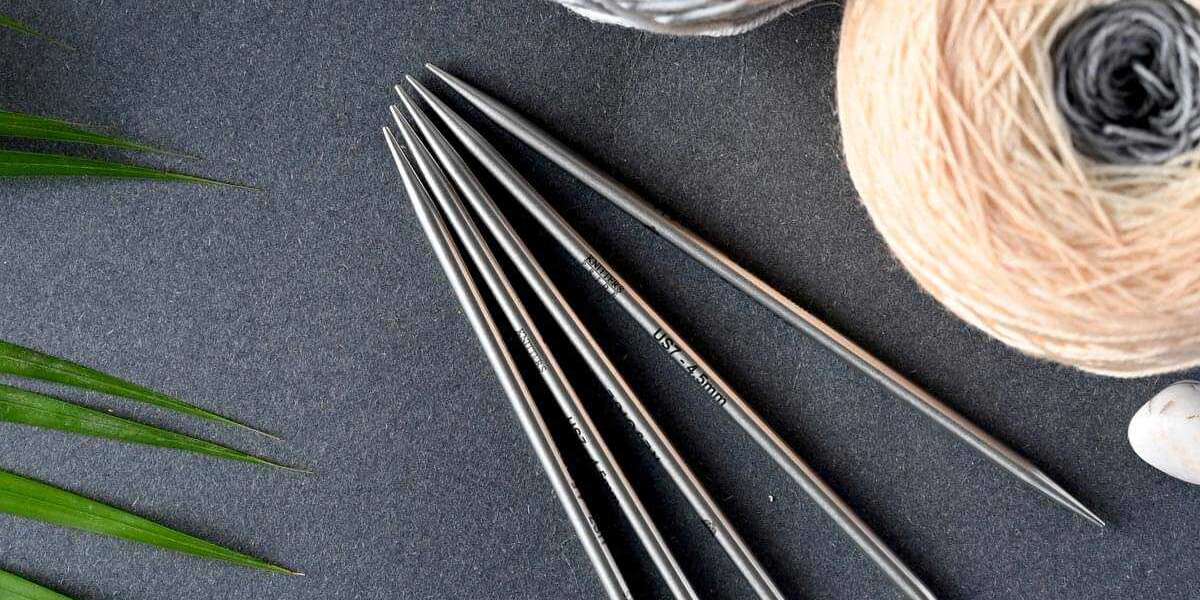Knitting is mindful. Every knitter has their own reasons to pick their knitting needles. Some do it for creating handmade gifts while love styling themselves with their own creations. Of the different types of needles many people are intimidated by knitting with double-pointed needles. With pointy tips on either end, they are ideal for knitting seamless circumferences. The reason for shying away from using DPNs is that knitters use the entire of five needle or four to form a circumference and an extra needle to knit with. They bring the thought of tacking a porcupine when you think of the multiple points. Managing five needles at once is overwhelming and the cause of many knitting mistakes the most common being dropped stitches. But, even then double pointed needles are prefer by knitters. It is because that they are the right tools for knitting small circumference and becomes manageable after knitting a few rounds.
Why go for DPNs?
Double-pointed needles (DPN) are only used for knitting small circular objects such as socks, hats, and even sweater sleeves. They are not worked for back and forth knitting as the stitches might slide off the other end. To secure stitches you can either add a needle stopper or just a rubber band or use them to knit small flat objects. While you knit them another ways, baby garments require special sizes which require the double points for smooth and easy stitch passing. And that is not all, you can make I-cord and more.
The double points are available in a wide range of sizes in 6" and 8" lengths. While the 6-inch ones are right for socks, baby hats and sleeves, the 8-inch ones works for sleeves, baskets and other bigger circumferences.
Provide Circumference for even the smallest knitting projects
With DPNs, you can complete the full project including the most drastic decreases and increases without having to change needles. With circular needles (the other option to knit in the round), you’re limited by the needle length. The rule of knitting in the round is that the circular needles length must be smaller than the circumference of the project. A 16" (40cm) hat can be easily made on the 10" (25cm) needle. But then even the smallest circulars, say for example 40cm fixed circulars won’t let you decrease beyond a certain number of stitches, while DPNs will. The other option to work with circulars and knit small circumferences is to knit with two circular needles or use the magic loop technique that requires a long circular needle.
Joining the Round
When you knit seamless rounds, you need to join the stitches together. This can happen at the time when you cast on stitches on one needle tip and then move them to other needle tips. You can join the rounds in easy and simple ways. You can simply slip the stitch from one needle to the other. You can forego a slip knot by dropping over the needle tip.
Avoiding Lousy Ladders is Easy
Lousy ladders can happen when working with double points. It is because the gap between each needle loosens the stitches around it. And that is the major reason some knitters are scared. To compensate for this, you just need to knit the second last or the first stitch on each needle more tightly. Another way to avoid ladders is to move stitches from one needle to another every few rows. This works best once you’ve finished with any number of increases or decreases.
Can be modified to store
It may be believed that DPNs are tough to store but they can be modified to make easy to store. Simply add rubber bands to the needle tips and your stitches will be secure on the needle tips. There are also needle cases to store the tools carefully.
Also for cable knitting patterns when you need to move the cable stitches also use a DPN to hold the stitches if you are not having a cable needle at hand. This can also be done for a dropped stitch. If you do not have a locking stitch marker pick the stitch on the needle and keep it safe.
Extra needle for various purposes
DPNs usually come in sets of five. Most knitters only use four and leave the fifth needle free. This fifth needle can be used in many ways. You never know when you’ll drop a needle, leave one in a hotel room by mistake, or snap one in half during a long flight.
There are a few potential drawbacks to DPNs, most of which can be easily overcome with a little practice. The trickiest part is getting started, since you’ll need to coordinate all your cast-on stitches on multiple needles but with a few rounds you’ll get steady.
With stainless steel double pointed needle of the Mindful Collection enjoy knitting even the smallest projects in the round. The smooth needles have a unique inspirational word imprinted on them to assist the knitter focus on the mindful aspects of the craft.
Source: https://medium.com/@mindulknitting/reasons-to-choose-mindful-double-pointed-needles-83aa47b577d5
 " class="wow_main_float_head_img">
" class="wow_main_float_head_img">






